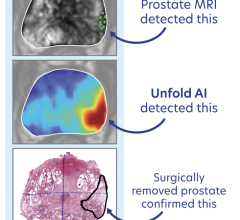June 17, 2019 — A new study reveals black men are less likely than white men to adopt an active surveillance strategy for their prostate cancer. The findings come at a time when a growing number of men with prostate cancer considered “low risk” are opting for active surveillance or watchful waiting rather than immediate treatment with surgery or radiation.
This difference, reported in a letter to The New England Journal of Medicine¸ appears to be due in part to socioeconomic and insurance factors, according to Brandon Mahal, M.D., from the department of radiation oncology at Dana-Farber/Brigham and Women's Cancer Center, and last author of the report. For example, he suggested, poorer or less well-insured black men might experience more barriers to the follow-up care – periodic exams, blood tests and repeat biopsies – involved in active surveillance, resulting in a decision by providers and/or patients to opt for immediate definitive treatment.
But the study, which looked at trends between 2010 and 2015, found that even after socioeconomic factors were accounted for, African American men were 16 percent less likely to adopt active surveillance or watchful waiting for low-risk prostate cancer. A possible explanation, said Mahal, is that providers may be concerned that low-risk prostate cancer in black men may be more aggressive than in white men; in fact, he said several studies have suggested that black men with low-risk disease might have poorer outcomes compared to non-African American men.
“Given the under-representation of black patients in clinical trials and concern about underlying aggressive disease, expert panels advise caution when applying conservative management to black patients,” said the report. That awareness could drive more black men toward immediate surgery or radiation therapy, noted Mahal.
The disparity “really demonstrates that there’s a need for further study into low-risk disease in African American men so that we can better treat these men with low-risk disease,” Mahal said.
Low-risk prostate cancer is defined as being clinical stage T1 to T2a (early stage disease); a Gleason score of 6 or less (on a scale of 2 to 10) and a prostate-specific antigen (PSA) level of less than 10 ng per milliliter.
The researchers’ analysis used data from the Surveillance, Epidemiology and End Results (SEER) Prostate with Watchful Waiting Database, which included 50,302 patients of whom 7,517 (14.9 percent) were black and 42,785 (85.1 percent) were nonblack. From 2010 through 2015, the use of radical prostatectomy (surgery to remove the prostate gland) and definitive radiotherapy decreased from 41.4 percent and 46 percent to 28.8 percent and 34.8 percent, respectively, among black men. The decrease was from 48.5 percent (prostatectomy) and 36.7 percent (radiotherapy) to 31.8 percent and 24.9 percent among nonblack men.
In the same period, the use of active surveillance or watchful waiting almost tripled, increasing from 12.6 percent to 36.4 percent among black men, and from 14.8 percent to 43.3 percent among nonblack men – the latter group adopting surveillance at a greater rate.
“This is the first study that has truly been able to examine how the factors of race and socioeconomic status impact the use of active surveillance for prostate cancer in the United States,” said Santino S. Butler, first author of the report. “Black men are underrepresented in clinical trials that have evaluated active surveillance. These findings demonstrate the need for clinical trials to better guide management for black men with low-risk prostate cancer.”
Specifically, said Mahal, to investigate whether active surveillance is a safe option for black men with low-risk disease, “we need clinical trials of African American men with low-risk prostate cancer where we evaluate their tumors for aggressive markers and also evaluate their outcomes with active surveillance. These studies would settle debates about the aggressiveness of low-risk prostate cancer in African American men and would help guide management decisions, which are now being made based on limited data.”
For more information: www.nejm.org


 April 25, 2024
April 25, 2024 








